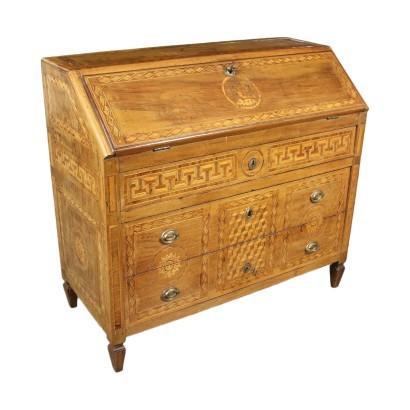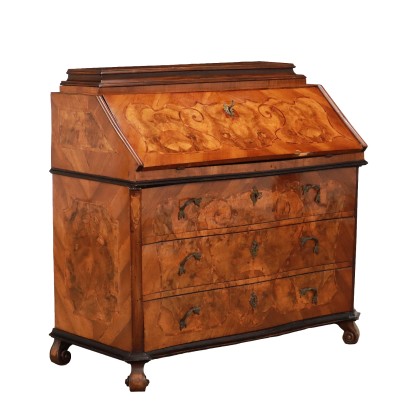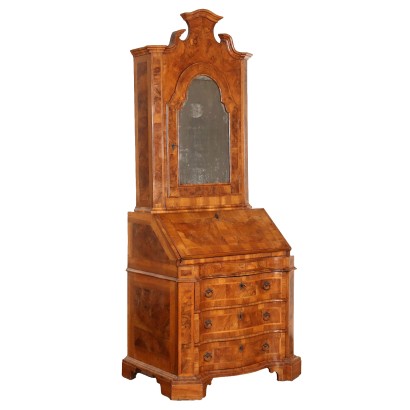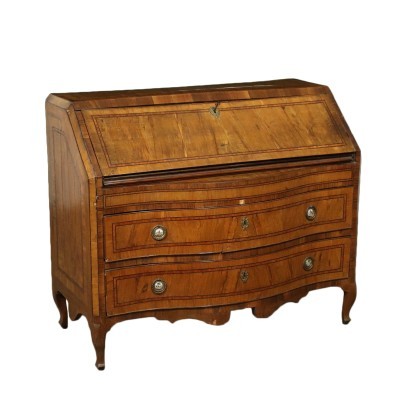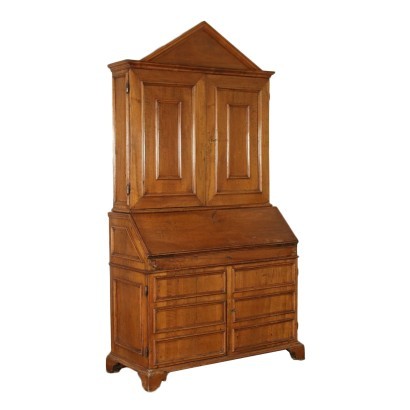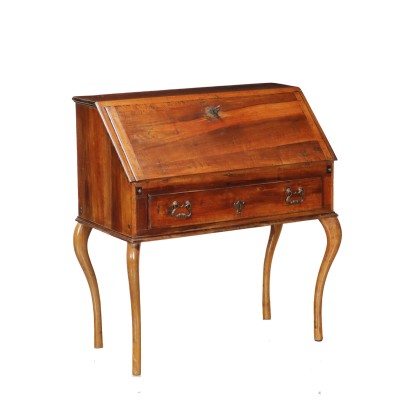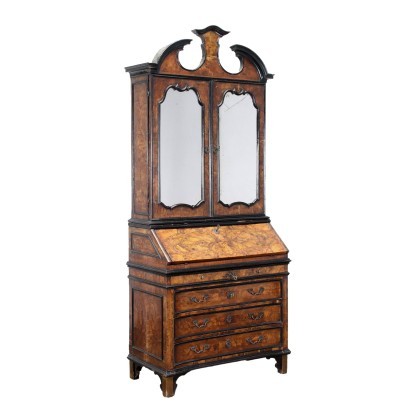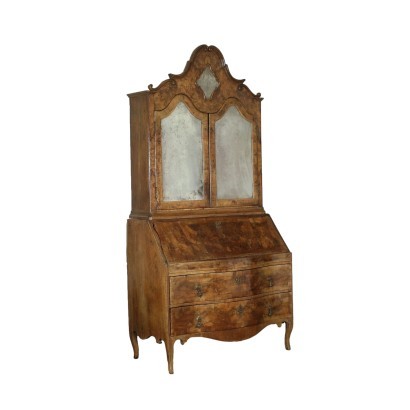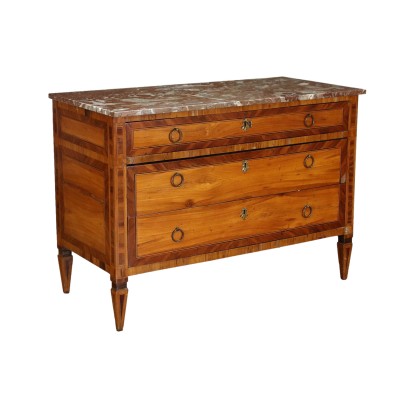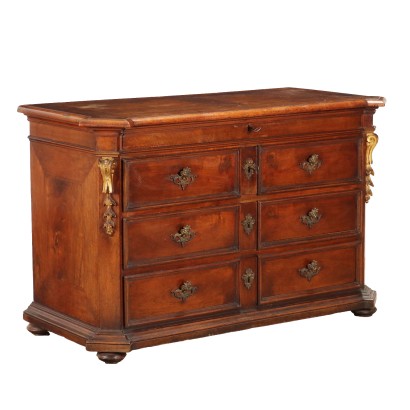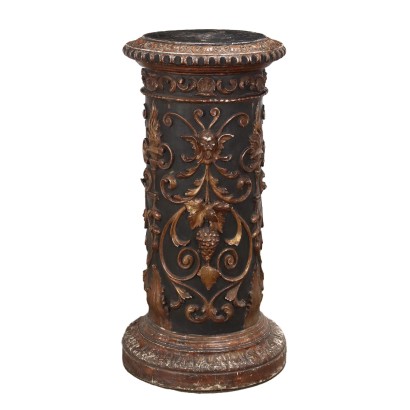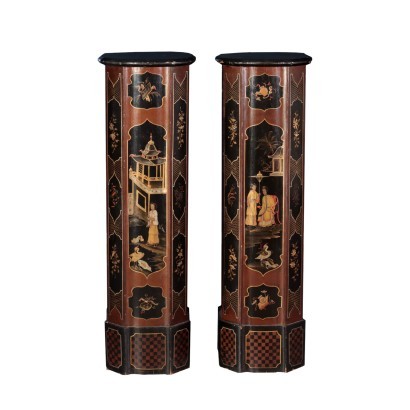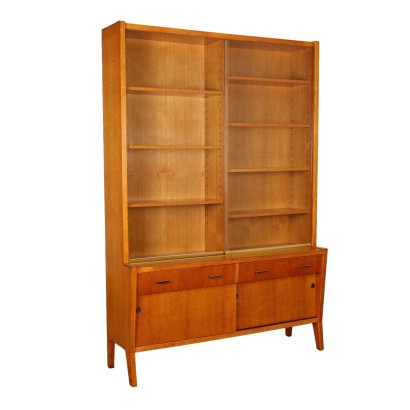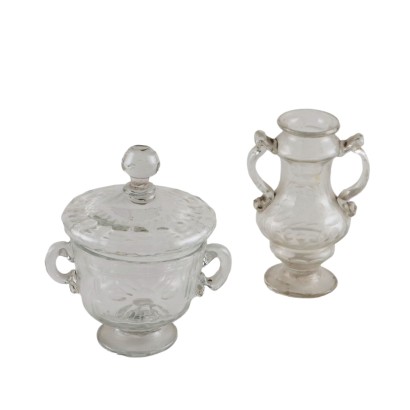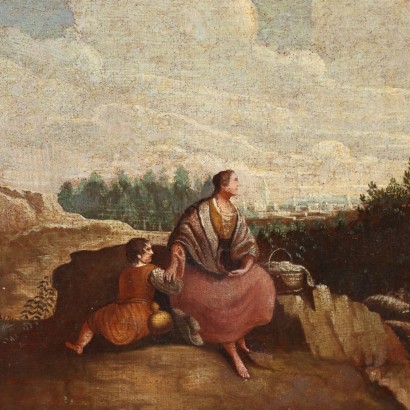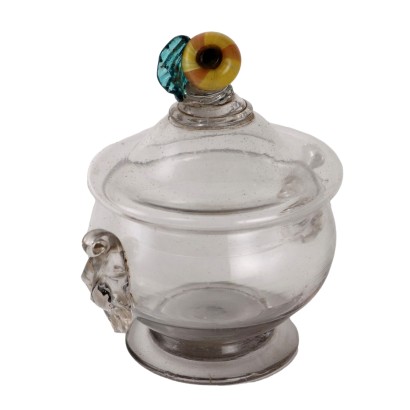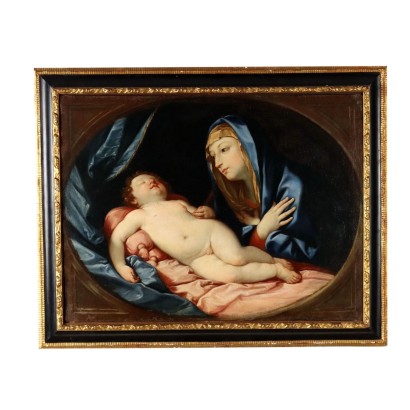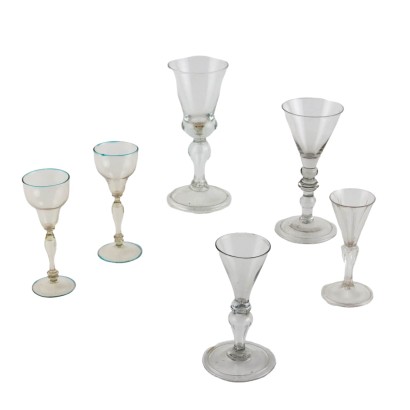Neoclassical Rolo Drop-Leaf Secretaire Italy 18th Century
Features
Style: Neo-Classical (1765-1790)
Age: 18th Century / 1701 - 1800
Origin: Rolo, Italy
Main essence: Maple , Walnut , Poplar
Material: Solid Maple , Solid Walnut
Description
Neoclassical drop-leaf secretarie of the rolese production; it is supported by pyramidal truncated feet tightened by a collar on top. It has three drawers surmouted by a small drawer in the undertop band and a folding door that hides a compartment with drawers. Walnut. It shows the typical topo inlays, geometrical frames on the sides, tripartite front, a greek on the band and floral rosewindow inside the reserves except for the one on the door that shows an inlaid bird and the central one that has an elegant marquetterie drawing. Poplar interiors.
Product Condition:
The item shows signs of wear due to age. Any damage or loss is displayed as completely as possible in the pictures. It may require restoration and recovery of french polish. Product with a Certificate of Authenticity and Lawful Origin.
Dimensions (cm):
Height: 103
Width: 112,5
Depth: 52,5
Certificate issued by: Enrico Sala, expert
Additional Information
Style: Neo-Classical (1765-1790)
This historical period includes a first phase that can be properly defined as the Louis XVI style.nOnly at a later time, with the maturation of archaeological fashions, was a new vision of furnishing civilization formulated and codified, now fully attributable to the Neoclassical Style.
In fact, both trends coexisted in unison until the last years of the eighteenth century.
nIn the field of cabinet making, the Directoire, Retour d'Egypte, Consular and Empire styles also fall within the neoclassical era.
nFind out more about Neoclassicism with the insights from our blog...
n



